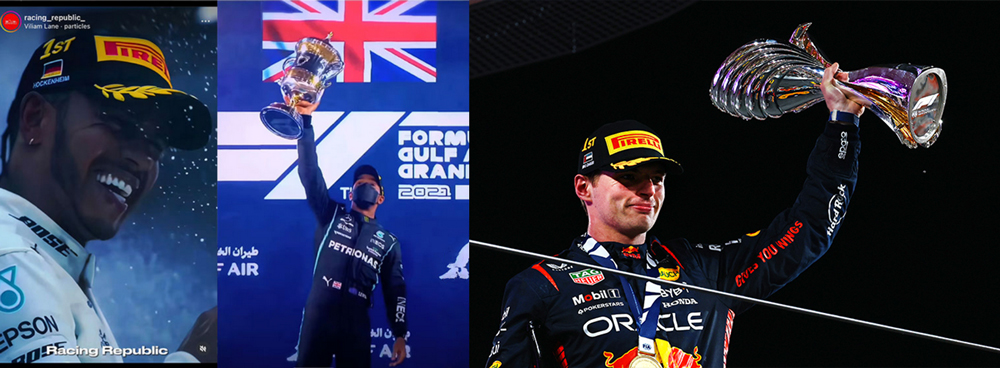Hamilton's Ferrari Dream Becomes a Nightmare: Is the F1 Legend's Spark Fading?
Lewis Hamilton’s Ferrari Gamble Turns Sour: A Season in Crisis
When Lewis Hamilton unveiled Ferrari's new F1 75 car at London's O2 Arena earlier this year, it was as if Formula 1’s tectonic plates had shifted. The seven-time world champion—and arguably the greatest driver the sport has ever seen—was now dressed in Ferrari red, flanked by teammate Charles Leclerc and team principal Frédéric Vasseur. Fans erupted with hope. This was Ferrari's moment to rewrite the script—a team so desperate for a championship that its last constructors' title, and Hamilton's own first crown, came back in 2008.
The synergy seemed perfect—F1’s biggest name at its most iconic team. Hamilton himself described his feelings as "invigorated," brimming with optimism after maiden testing sessions with the new car at Ferrari’s Fiorano track. He and Leclerc, forming a potential "Dream Team," bonded further with friendly chess matches off-track. In short, Ferrari felt the missing piece to its title aspirations was finally in place.
Yet, six months into their 2025 season, the dream has turned into a nightmare.
A Season in Free Fall
Ferrari’s season read like a cruel joke by the summer break. McLaren had reemerged as titans, and Mercedes and Red Bull (despite trailing Ferrari in the standings) had at least managed to collect a Grand Prix win each. Ferrari? One sprint race triumph in China, courtesy of Hamilton, and a smattering of podiums from Leclerc—hardly the championship resurgence they envisioned.
Hamilton's struggles have been particularly jarring. Once a symbol of resilience and confidence, the man whose name is synonymous with domination in Formula 1 appeared broken by Ferrari's rollercoaster of expectations and shortcomings. In Budapest, his frustration boiled over in startling fashion. After being eliminated in Q1—a session where Leclerc managed a stunning pole lap—Hamilton declared he was “absolutely useless.”
The comments echoed through the paddock, casting a shadow of self-doubt over a driver once regarded as untouchable. After finishing 12th on Sunday, he cryptically told reporters, "There's a lot going on in the background … that's not great," and even hinted at uncertainty about his return to the cockpit post-summer break. “Hopefully I’ll be back, yeah,” he remarked, setting off a flurry of speculation.
For Ferrari chairman John Elkann, who authorized a reported £60 million annual paycheck to lure Hamilton to the team, these statements must feel like salt in the wound. Hamilton's arrival was marketed as a morale booster, but instead, his words could be seen as signaling surrender.
Leclerc: A Familiar Pattern
While Hamilton’s performances have garnered the most attention, Leclerc hasn’t been spared from the chaos. Despite his electrifying pole lap in Hungary, his race unraveled in typical Ferrari fashion. Radio messages painted a familiar story of a car losing competitiveness as the laps ticked down.
"We are going to lose this race with these things," an exasperated Leclerc vented. “You just have to listen to me … It’s a miracle if we finish on the podium.”
He wasn’t far off. After leading early on, Leclerc slid to fourth amid late-race pace issues.
Post-race, Leclerc fell into his usual routine—criticizing the team's decisions during the heat of battle, only to backtrack afterward. While visibly frustrated, his post-race explanation pointed to a faulty chassis rather than the strategy missteps he lambasted on the airwaves. Still, this “criticize-and-retract” cycle feels stale, leaving the impression of a driver trying (and perhaps failing) to keep the team accountable without rocking the boat too much.
A Career Crossroads for Hamilton
The stark contrast between Leclerc’s ability to salvage competitive results and Hamilton’s struggles raises a troubling question: is the legendary Brit losing his edge at a time when Ferrari desperately needs him to find it?
Hamilton’s once-unshakable aura of confidence has been replaced by moments of disillusionment. Ferrari boss Vasseur may have brushed off post-Budapest concerns, saying, "I don't need to motivate him … He’s frustrated, but not demotivated." Yet Hamilton’s downcast demeanor tells a different story.
At times, his frustration has been directed outward—clashes with race engineer Riccardo Adami have highlighted the disconnect between Hamilton and Ferrari’s modus operandi. By comparison, Leclerc’s performance in a nearly identical car leaves little room to pin all the blame on Ferrari.
Even Mercedes team principal Toto Wolff—Hamilton’s longtime ally—has taken notice. "That is Lewis wearing his heart on his sleeve," Wolff commented. "He will beat himself up." While emotions are nothing new for the Brit, they now seem more destructive than galvanizing.
Searching for Redemption
It’s almost poetic that the same traits that once made Hamilton a force in Formula 1—his relentless passion, his emotional transparency, his unwavering self-belief—are now raising questions about his ability to dig Ferrari out of its 15-year title drought.
There’s still time for Ferrari and Hamilton to turn things around. Much of the team’s planning hinges on the sport’s new 2026 regulations, but whether Hamilton has the patience—or the confidence—to wait that long remains to be seen.
“Hopefully I’ll be back,” Hamilton said after Hungary. Ferrari must hope just as fervently that the driver who had the world’s attention at the O2 Arena in February can reclaim the spark that made him great. Otherwise, the team’s gamble on its superstar signing may go down as yet another chapter in its recent history of missed opportunities.
It’s not just Ferrari’s car that needs fixing—perhaps the most urgent repair lies within Hamilton himself.
Up Next



